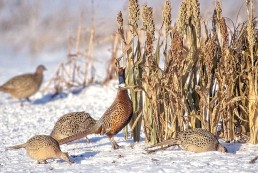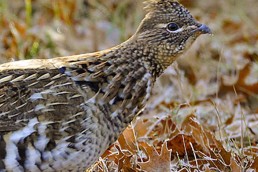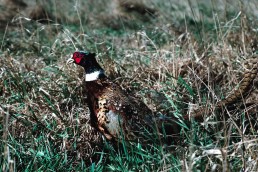2016 Pheasant Brood Survey Results
SHARE THIS POST
The South Dakota Game, Fish and Parks (GFP) has completed their annual Pheasant Brood Survey, and the results show a 20 percent decrease in the statewide pheasants-per-mile (PPM) index from 2015.
The 2016 statewide PPM index is 3.05, down from last year’s index of 3.83.
“After two consecutive years of substantial increases in the statewide PPM index, a slight retreat was observed this year,” stated Kelly Hepler, GFP secretary. “Of the 110 routes surveyed statewide, 38 showed an increase in PPM while 72 declined from 2015. Weather conditions and available habitat are key factors to pheasant production and annual PPM fluctuations. We want to remind hunters that this year’s index is twice as high as the 2013 index and higher than the 2.7 PPM observed in 2014 when hunters harvested 1.2 million roosters.”
Hepler also said that ideal pheasant hunting opportunities would exist in 2016.
From late July through mid-August, GFP surveyed 110, 30-mile routes across the state’s pheasant range to estimate production and to calculate the PPM index. The survey is not a population estimate, but rather compares the number of pheasants observed on the routes and establishes trend information. Survey routes are grouped into 13 areas, based on a local city, and the index value of each local city area is then compared to index values of the previous year and the 10-year average.
Survey results indicate the decrease was significant for the Chamberlain, Winner, Aberdeen, Huron, Mitchell, Yankton and Sioux Falls areas.
Are you enjoying this post?
You can be among the first to get the latest info on where to go, what to use and how to use it!
“Habitat continues to be at the forefront of the conversation and still remains a crucial factor in pheasant numbers,” Hepler said. “Bird numbers are higher in parts of the state where quality habitat conditions still exist, primarily on grasslands, including those enrolled in the Conservation Reserve Program as well as fields of cereal crops such as winter wheat. We continue to work hard in our Habitat Pays outreach efforts and in cooperation with landowners and partner organizations to provide an improved future for wildlife habitat in our state.”
Public hunting opportunities are abundant in South Dakota, with 1 million acres of publicly owned and private land leased through GFP’s Walk-In Area Program and the James River Watershed Conservation Reserve Enhancement Program available in the primary pheasant range of South Dakota.
The 2016 public hunting atlas and an online interactive map of public lands and private lands leased for public hunting can be found at gfp.sd.gov/hunting/areas.
“Each year, the results of this survey are highly anticipated by those with a strong interest in South Dakota’s hunting heritage. The availability of pheasants and pheasant hunting opportunities across the state this fall should serve to enhance that tradition,” Hepler said.
For more information…
For more information and details on the 2016 Pheasant Brood Route Survey, including the 2016 Pheasant Outlook, the 2016 Brood Survey Report and the 10-Year Brood Count Trends, visit gfp.sd.gov/hunting/small-game/pheasants.aspx.
MWO
SHARE THIS POST
Did you enjoy this post?
You can be among the first to get the latest info on where to go, what to use and how to use it!
MWO
We believe being outdoors is good. With more than 1,000 articles each year, MidWest Outdoors magazine is all about sharing outdoor experiences with you—where to go, what to use and how to use it… whether you’re close to home or on that trip of a lifetime.



